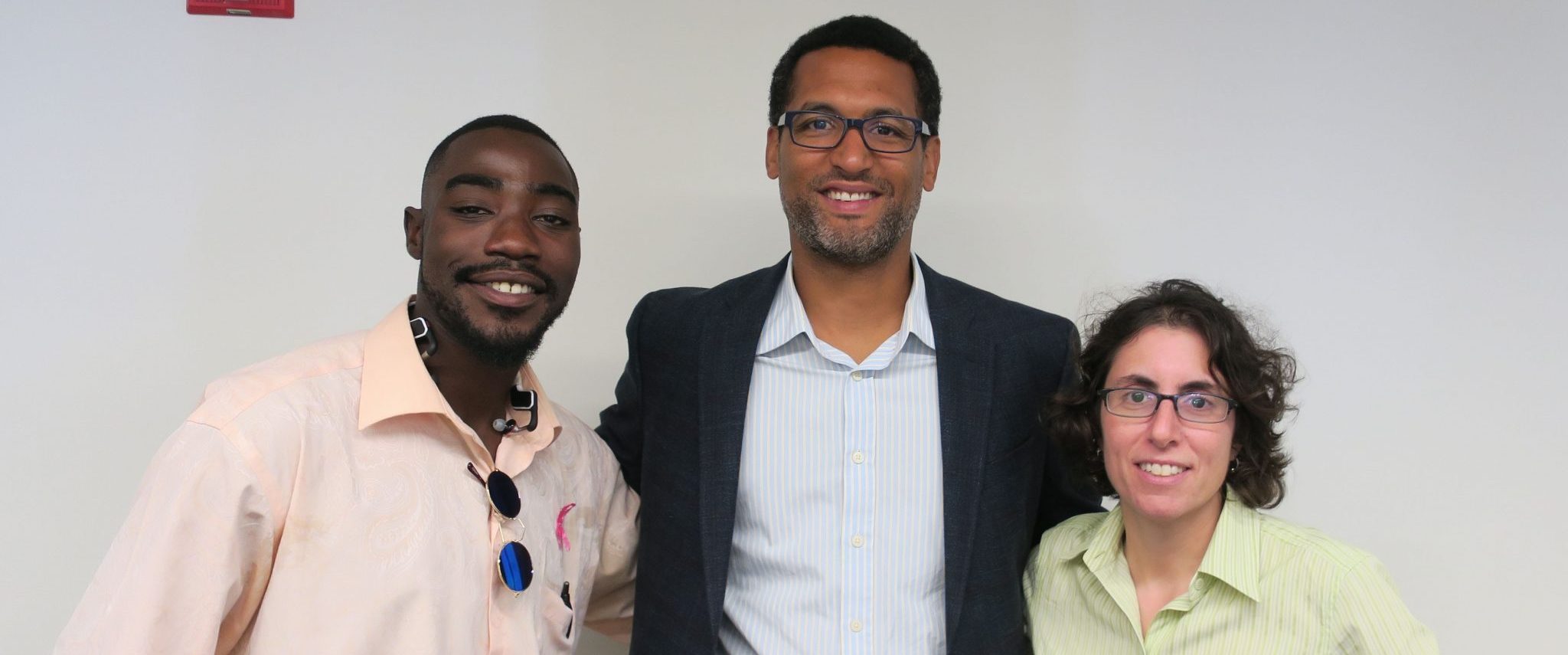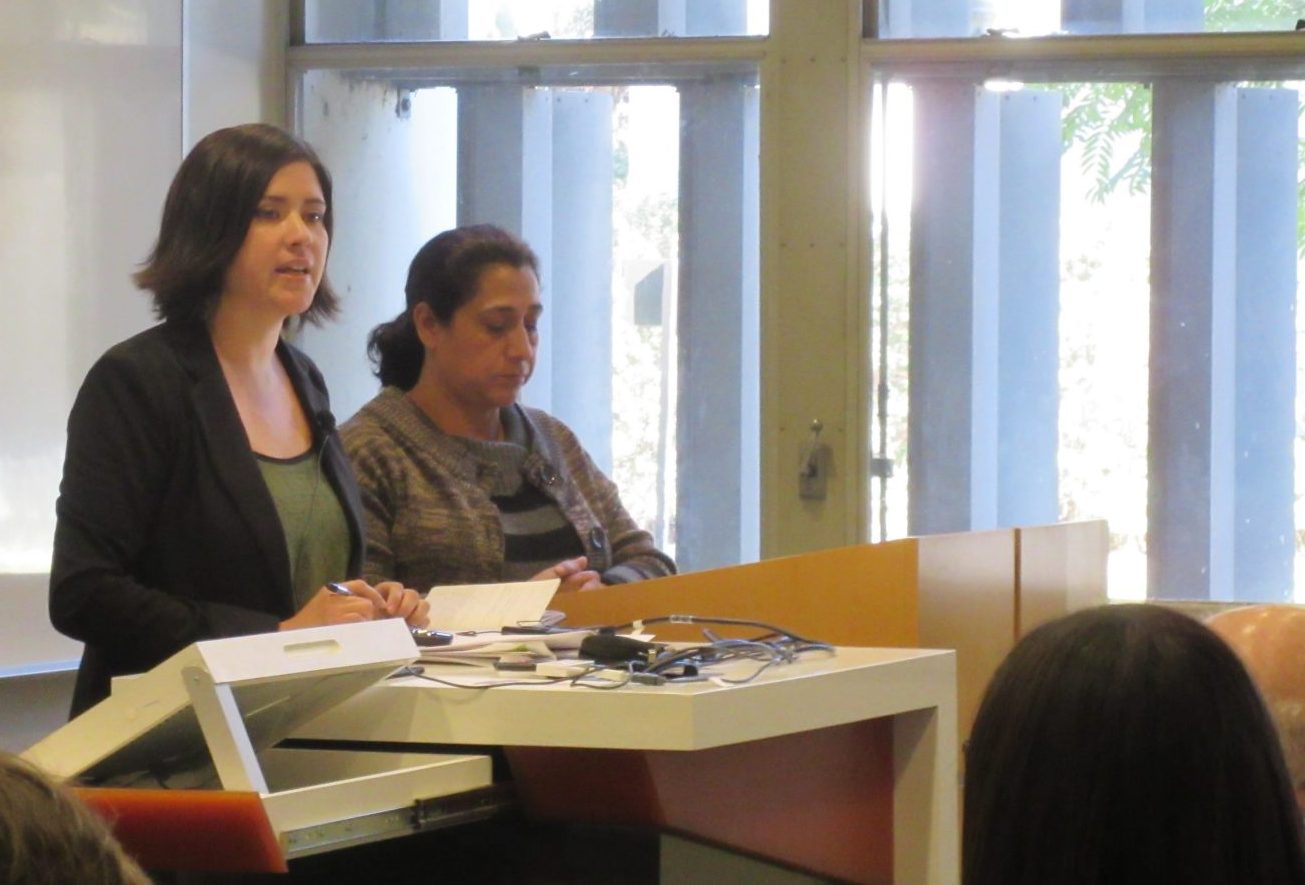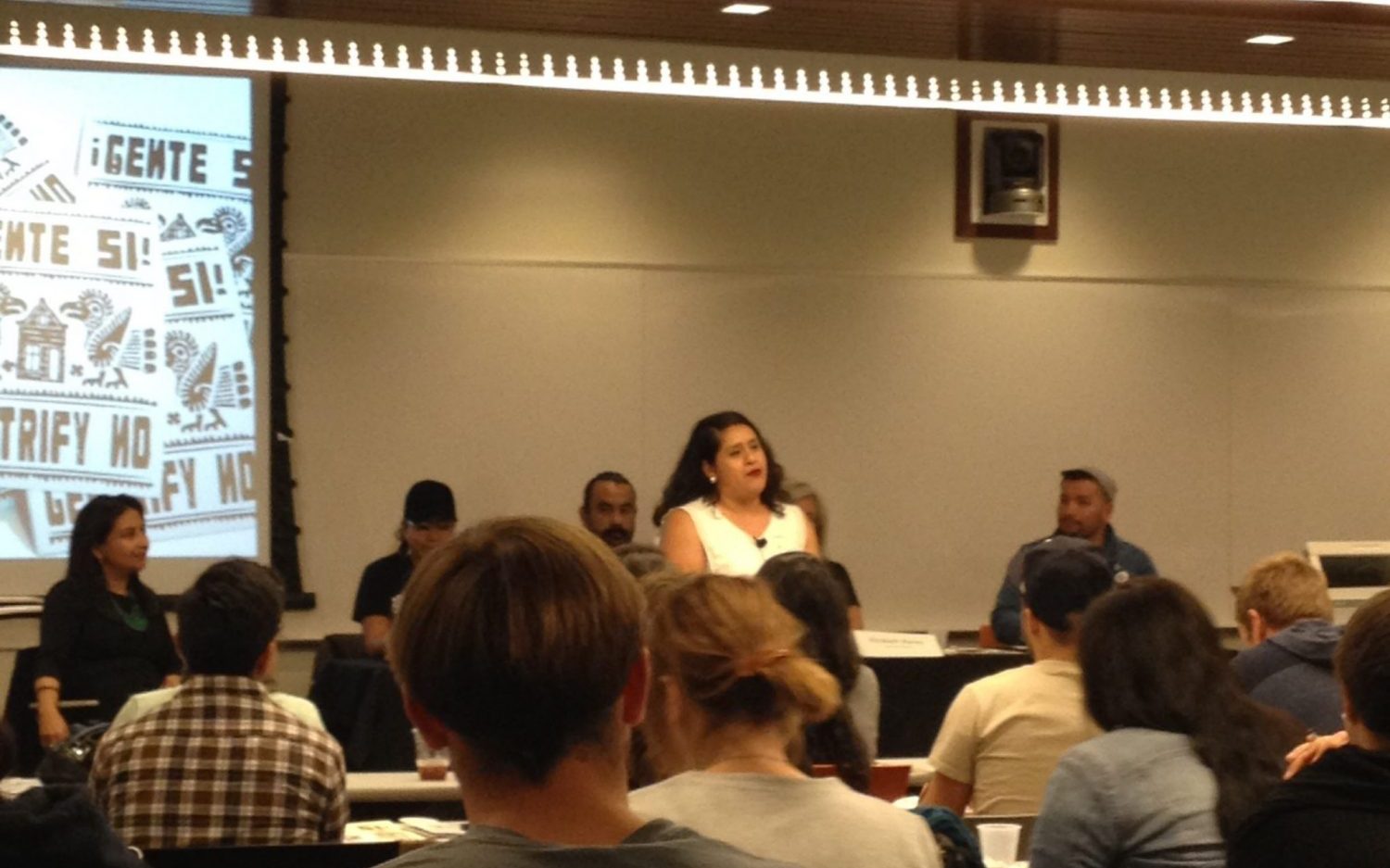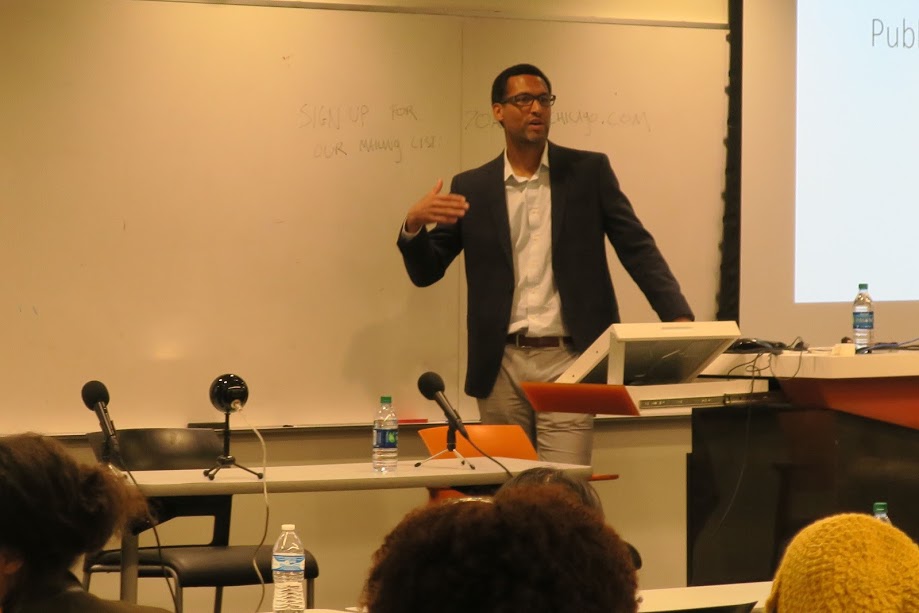Public Housing and Activism series brought together community members, activists, academics and public officials to discuss the thorny intersection of displacement, environmental justice, and housing policy.
The 2016-2017 Housing and Activism series, produced with our partners at the Ziman Center for Real Estate and the Institute on Inequality and Democracy, strove to center stage the people that have lived and are living through the massive federal policy change away from public housing developments. The series started with a look back at the city considered the epicenter for public housing demolition, Chicago, hearing the perspective of former and current residents who witnessed the near wholesale displacement of their community at Cabrini Green. The second installment focused on LA’s own plans for demolition with a conversation on the much debated and awaited Jordan Downs redevelopment. The final event returned to another community that famously fought the loss of its public housing units, Boyle Heights with Pico Aliso, this time addressing the displacement by the private market that threatens the community today.
Adding to the in-house academic researchers at UCLA, this series sought knowledge from the field. We heard from a filmmaker, an artist-activist, four community members, two community organizers, a Housing Authority Executive Director, and the Executive Chair of a Neighborhood Council. This made for an unfiltered perspective about lived experiences. By the consistently standing-room-only turnout and the humbled hush throughout each panel, it was evident that this perspective is too rarely heard here. Researchers and students listened eagerly and panelists spoke honestly about the policies affecting them. The dialogue was productive without avoiding the fact that this kind of exchange, between policy advocates and communities, is too few and far between.
“We have all heard the phrase that ‘those ignorant of history are doomed to repeat it.’ Hearing from community members in Cabrini Green and Jordan Downs was a powerful opportunity to better understand those historical ties. And as we continued with Boyle Heights – I have never had a class discussion follow up on a public event that was more layered and engaging. I hope we can continue to provide our students and faculty with these opportunities to learn from and listen to a diversity of perspectives in the communities for which we work and think,” said Lewis Center Associate Faculty Director, Michael Lens.
Given the topic—the forced removal or threat of removal from one’s home with a dash of environmental injustice —emotions ran high, but the speakers all maintained a high level of discourse and courtesy. The conversations included a range of opinions, some competing interest groups, and plenty of room for disagreement among panelists. With by no means a monolithic perspective being presented by the community members, some moments might have taken place at a public hearing or community meeting. The high level of decorum yet raw candor demonstrated the potential for planners to work more closely with communities. As a series designed to give community members the mic, it showed that a community engagement format built around listening first, rather than presenting a plan first works.
1. November 16 – 70 Acres in Chicago

“70 Acres in Chicago” is a retrospective documentary that follows residents of Chicago’s Cabrini Green high-rises as they are demolished and replaced with another social experiment: mixed income neighborhoods. The screening was followed by a panel discussion with the filmmaker and former and current residents who experienced the comprehensive displacement. Michael Lens framed the discussion with a crash course in 90 years of public housing. He described the theoretical claim undergirding public housing redevelopment: income mixing—that middle-class households will positively impact their lower income neighbors and vice-versa. This hypothesis molded the low-density mixed-income townhouses of the new Cabrini Green that replaced the maligned high rise towers.
The conversation revolved around the disappointing research findings on mixed income housing: minimal interaction across lines of race and class and large drops in neighborhood trust and cohesion, metrics that have been shown to protect against crime and violence. Panelists echoing the scholarship described a lack of cultural competency, respect and humility among new higher income neighbors. Debate centered on whether income-mixed development is a good idea that just hasn’t been implemented correctly or is a false, paternalistic policy promise. With its proximity to highvalue downtown real estate, some residents believe that Cabrini Green was exploited for private gain and indeed the area has seen a leap in primary residential sales. Audience members drew the parallel to LA’s Jordan Downs in Watts. The panelists encouraged those involved with Jordan Downs to organize residents, “keep your networks, stay close to family…occupy the land,” and to emphasize solutions.
2. January 26 – Jordan Downs and South LA

Jordan Downs is a public housing development home to 2,600 residents in Watts that is slated for transformation into an “urban village.” This years-long redevelopment effort is one of the largest public works projects in Los Angeles and will contain 1,400 mixed-income residential units, shops, a park, and a community center. Jordan Downs touches on a host of hot-button issues for Los Angeles, and the country generally. To begin, spending on public housing has been down nationwide for years, and the decline in funding is felt keenly in places like seven-decade-old Jordan Downs. Panelists raised questions of priority and equity, noting that the $700 million – $1 billion budget for this one project is significantly more than the estimated $500 million needed to refurbish every public housing unit in Los Angeles. There were also questions about how this investment—and in particular the addition of 700 market-rate apartments—might change the character of Watts.
While the plan is phased in order to avoid the kind of displacement these redevelopments are known for, residents are equally as concerned about remaining on-site: it is former industrial land with dangerous levels of lead and other toxic chemicals, and the tensions over how to clean the site before work begins have run high. At the heart of the conversation was the nature of trust and engagement. Guthrie noted that the final Jordan Downs Master Plan was the result of more than 100 public meetings and review sessions, and some residents in the audience said they were excited for work to finally get underway. But other residents highlighted the decisions they were not allowed to meaningfully participate in, such as changes to tenancy agreements or the extent of the remediation of toxic chemicals around the site. While expressing optimism and acknowledging some cooperation from the city, residents urged more transparency and continued meetings as the demolition looms.
Please visit YouTube for a recording of this event from the filmmaker, Drew Bachrach.
3. May 9 – Resisting Displacement in Boyle Heights
The final installment was a partnership with a masters student working group called “Our Hoods, Our Stories.” The panel came out of the students’ question ‘how do we think about urban planning today, complicit as it is historically in manufacturing and often perpetuating inequality?’ The Boyle Heights community saw the forced removal of residents with the demolition of the neighborhood’s Pico-Aliso public housing projects in 1997. They are now facing displacement again, this time at the hands of the private market. Residents are acutely aware of the art-oriented development, often called “artwashing,” that has taken place downtown and threatens to spread to neighboring Boyle Heights.

Panelists recounted how the community has come together to address failures in city service provision on its own. They detailed their deliberate efforts to walk the line between useful community improvements and investments that might attract the attention of developers. Audience members asked about the role of students and faculty in gentrification, how city policies have hurt or helped, and how educators should approach communities undergoing displacement. Panelists took the opportunity to refute accusations of anti white violence on the part of Boyle Heights activists. Pointing to the neighborhood’s long history of top down “renewal” efforts defined by the Pico Aliso housing development and unresolved environmental injustice issues, the community’s defensive stance is learned: “whenever you say ‘yes, but’ you start negotiating your defeat. So we say no.” The urban planning students in the room, cognizant of their field’s historic complicity in marginalizing urban agendas, were eager to hear how not to perpetuate their field’s conflicted legacy. The advice: “Listen. As planners, you don’t know everything. You’re there to help facilitate. Usually the community knows how to solve their problems. Come talk to us and listen.”
Ananya Roy, Director of the Institute on Inequality and Democracy at UCLA Luskin, who moderated the Boyle Heights panel, framed the series as rooting the traditional work of the university–documenting and theorizing–in community organizing work on the ground, calling community organizing the “reality that generates the conceptual frameworks needed for change.” By not asking to hear again from academic “experts” on community level dynamics, the series highlighted community knowledge as an expertise and the real, although often missing, sustenance of professional planners. In demonstrating the value of dialogue between academia and communities, the series hopes to inspire more of it.
